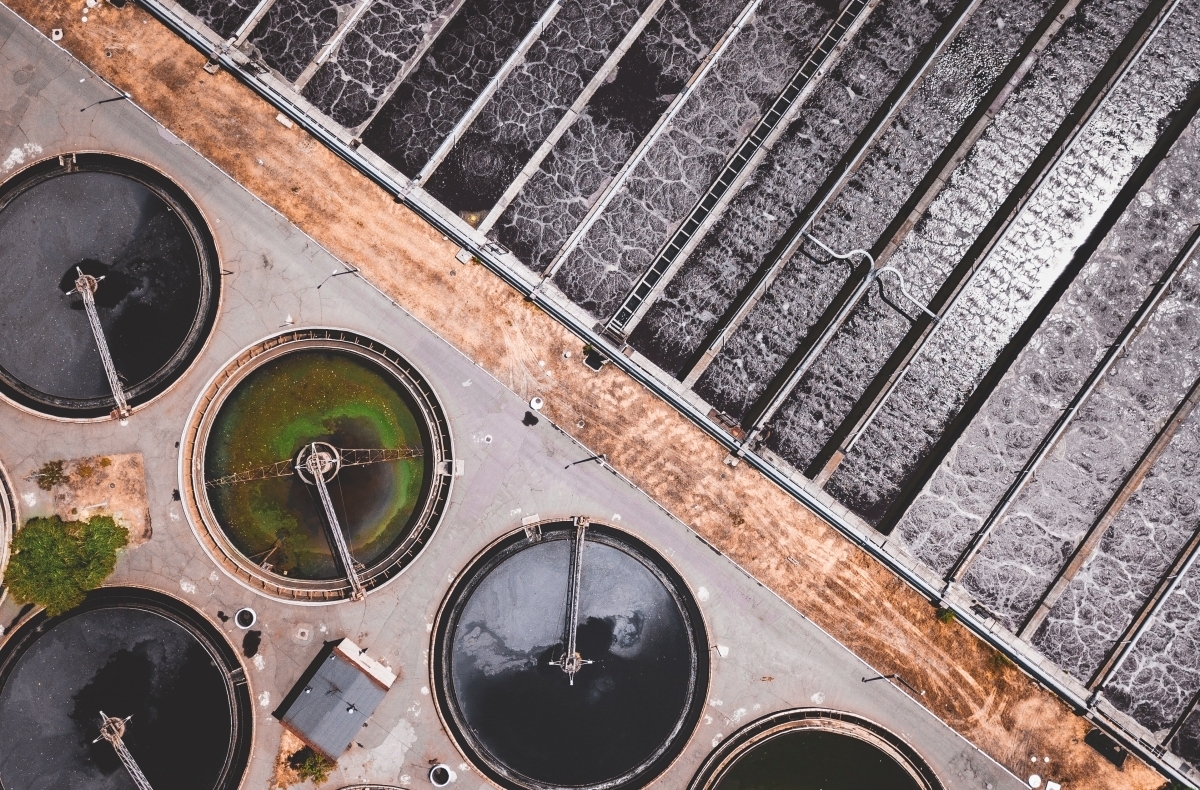Sewer Treasure: Stanford engineers reveal how to optimize processes for transforming sulfur in wastewater to valuable materials
March 2, 2022

Ivan Bandura / Unsplash
One person’s wastewater is another person’s treasure. A new Stanford University study paves the way to mining sewage for valuable materials used in fertilizers and batteries that could someday power smartphones and airplanes. The analysis, published recently in ACS ES&T Engineering, reveals how to optimize electrical processes for transforming sulfur pollution, and could help lead to affordable, renewable energy-powered wastewater treatment that creates drinkable water.
“We are always looking for ways to close the loop on chemical manufacturing processes,” said study senior author Will Tarpeh, an assistant professor of chemical engineering at Stanford and WHD affiliate. “Sulfur is a key elemental cycle with room for improvements in efficiently converting sulfur pollutants into products like fertilizer and battery components.”
A better solution
As fresh water supplies dwindle, particularly in arid regions, focus has intensified on developing technologies that convert wastewater to drinkable water. Membrane processes that use anaerobic or oxygen-free environments to filter wastewater are particularly promising because they require relatively little energy. However, these processes produce sulfide, a compound that can be toxic, corrosive and malodorous. Strategies for dealing with that problem, such as chemical oxidation or the use of certain chemicals to convert the sulfur into separable solids, can generate byproducts and drive chemical reactions that corrode pipes and make it harder to disinfect the water.
A tantalizing solution for dealing with anaerobic filtration’s sulfide output lies in converting the sulfide to chemicals used in fertilizer and cathode material for lithium-sulfur batteries, but the mechanisms for doing so are still not well understood. So, Tarpeh and his colleagues set out to elucidate a cost-effective approach that would create no chemical byproducts.
The researchers focused on electrochemical sulfur oxidation, which requires low energy input and enables fine-tuned control of final sulfur products. (Whereas some products, such as elemental sulfur, can deposit on electrodes and slow down chemical reactions, others, like sulfate, can be easily captured and reused.) If it worked effectively, the process could be powered by renewable energy and adapted to treat wastewater collected from individual buildings or entire cities.
Making novel use of scanning electrochemical microscopy – a technique that facilitates microscopic snapshots of electrode surfaces while reactors are operating – the researchers quantified the rates of each step of electrochemical sulfur oxidation along with the types and amounts of products formed. They identified the main chemical barriers to sulfur recovery, including electrode fouling and which intermediates are hardest to convert. They found, among other things, that varying operating parameters, such as the reactor voltage, could facilitate low-energy sulfur recovery from wastewater.
These and other insights clarified trade-offs between energy efficiency, sulfide removal, sulfate production and time. With them, the researchers outlined a framework to inform the design of future electrochemical sulfide oxidation processes that balance energy input, pollutant removal and resource recovery. Looking toward the future, the sulfur recovery technology could also be combined with other techniques, such as recovery of nitrogen from wastewater to produce ammonium sulfate fertilizer. The Codiga Resource Recovery Center, a pilot-scale treatment plant on Stanford’s campus, will likely play a large role in accelerating future design and implementation of these approaches.
“Hopefully, this study will help accelerate adoption of technology that mitigates pollution, recovers valuable resources and creates potable water all at the same time,” said study lead author Xiaohan Shao, a PhD student in civil and environmental engineering at Stanford.
Tarpeh is also an assistant professor (by courtesy) of civil and environmental engineering, a center fellow (by courtesy) of the Stanford Woods Institute for the Environment and a member of Stanford Bio-X. Additional author Sydney Johnson was an undergraduate student in chemical engineering at Stanford at the time of the research.
The research was funded by Stanford’s Department of Chemical Engineering, the National Science Foundation Engineering Research Center for Re-inventing the Nation’s Urban Water Infrastructure (ReNUWIt) and the Stanford Woods Institute for the Environment Environmental Venture Projects program.
Contact Information
Rob Jordan
Associate Editor, Environment and Sustainability, Woods Institute
rjordan@stanford.edu


